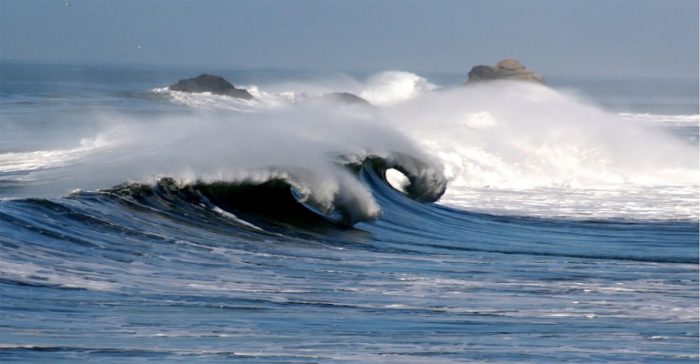Finding Energy Opportunities in the Blue Economy
First-of-its kind assessment outlines a dozen promising markets for marine energy
energyenvironment.pnnl.gov, September 2018
Waves, as well as ocean and tidal currents, contain tremendous energy. At the same time, many industries need energy sources in or around marine environments. What if you could directly harness ocean energy to bring power where it didn’t exist before?
Researchers from PNNL, working with their colleagues at the National Renewable Energy Laboratory, have identified and assessed 12 markets that could benefit from marine energy.
In what PNNL researcher Andrea Copping called “the most comprehensive and broad assessment of its kind” the 157-page market description and evaluation is delivering unique and valuable insights for industry and [mks_pullquote align=”right” width=”275″ size=”24″ bg_color=”#8224e3″ txt_color=”#ffffff”]“the most comprehensive and broad assessment of its kind,”[/mks_pullquote]technology developers.
Motion of the Ocean
The lure of ocean power has been around for decades. It’s part of the “blue economy,” or the sustainable use of ocean resources for economic growth. The challenge has been developing techniques that are efficient, robust, and cost effective to extract and deliver that ocean power.
The team analyzed the current technical and economic landscapes for 12 maritime markets that showed promise for marine and hydrokinetic energy technologies. These markets ranged from bringing ocean-driven power to coastal communities, to recharging underwater vehicles for ocean observatories, to providing power to industries such as offshore aquaculture and seawater mining.
Each market case describes a potential application, a value proposition, and a path to market. Each one also includes the current state of technology, power requirements, and industry and government partners who may be interested in further developing each application.
Maritime Markets
To identify the most attractive markets, the team conducted multiple industry engagement forums and literature reviews, and interviewed dozens of stakeholders in those markets, a process that took months.
The results were intriguing, and sometimes surprising. For example, the team describes how underwater research and data-gathering vehicles use battery power that must be recharged, typically using a surface ship. This is a labor-intensive, costly, and dangerous process. The opportunity here is to link wave-converting devices, which could sit on the ocean floor, to systems that deliver the power to the vehicle at depth.
Another promising market was improving disaster resiliency and recovery. When storms knock out energy infrastructure in coastal communities, governments typically bring in huge diesel generators to supply temporary power. But if ocean-based energy devices were sited at those locations, residents could get energy delivered faster, while reducing the use of diesel fuel.
The global demand for clean water is driving the market for desalination, which removes salts and other dissolved solids from water. Wave and ocean currents can be used to produce drinking water with little to no electricity generation. This is appealing in regions where grid-connected electricity is unreliable or costly. Another option is to design hybrid systems that can be used to produce drinking water and electricity. Potential markets include water utilities, isolated communities, disaster relief situations, and military applications.
Informing Future Research Investments
DOE’s Water Power Technologies Office made the assessment![]() available in a Request for Information in April 2018, seeking stakeholder feedback and recommendations on next steps. DOE is using the results as it plans future research and technology investments related to marine and hydrokinetic energy. DOE’s Office of Energy Efficiency and Renewable Energy funded the work. See more information on DOE’s website.
available in a Request for Information in April 2018, seeking stakeholder feedback and recommendations on next steps. DOE is using the results as it plans future research and technology investments related to marine and hydrokinetic energy. DOE’s Office of Energy Efficiency and Renewable Energy funded the work. See more information on DOE’s website.
PNNL Research Team: Andrea Copping, Alicia Gorton, Gary Gill, and Molly Grear
